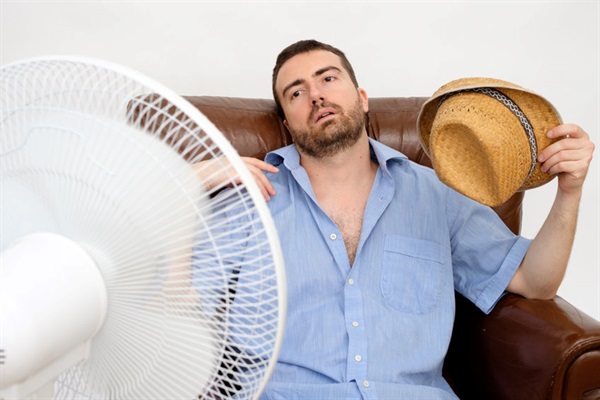
Why Is My Second Floor So Hot?
If you live in a warmer client and have a two-story house or townhouse, you may have noticed the rooms upstairs can be noticeably hotter than your downstairs rooms.
It’s a problem that tends to be more prevalent in the summer months, when the hot sun is beaming down, scorching everything it touches. While turning up the air conditioning may help some, it’s often not enough to fix the problem completely.
As with most homeownership problems, the first step toward fixing something is to figure out what’s causing it. In this article, we’ll go over why your upstairs rooms may be hotter than your downstairs rooms and offer some suggestions on how you can better regulate your home’s temperature.

The best way to diagnose what is causing the top of your house to be warmer than the bottom is by calling one of the qualified HVAC technicians at Odyssey Mechanical. We can help you figure out what the problem is and how to fix it, whether that’s repairing faulty ductwork or adding an additional HVAC system to a larger home. Call us at 910-392-6400 or click here to schedule an HVAC checkup.
It’s a problem that tends to be more prevalent in the summer months, when the hot sun is beaming down, scorching everything it touches. While turning up the air conditioning may help some, it’s often not enough to fix the problem completely.
As with most homeownership problems, the first step toward fixing something is to figure out what’s causing it. In this article, we’ll go over why your upstairs rooms may be hotter than your downstairs rooms and offer some suggestions on how you can better regulate your home’s temperature.
What Causes Upstairs Rooms to Get So Hot?
Hot air rises, and that fact means your upstairs rooms are always going to be at least a little bit warmer than your downstairs rooms. That said, you may be encountering this problem for additional reasons:
Your conditioner is too old.
Most well-maintained air conditioning units have a lifespan of about 15 years so if yours isn’t keeping things as cool as it used to, it might be time for a replacement. If you haven’t been scheduling regular maintenance for your HVAC unit, it may only last 10 years or even less. Regardless, all HVAC systems will become less efficient and need replacing over time.
Your roof is absorbing a lot of heat.
If you live in an area with plenty of trees, this probably won’t be a problem. However, if your roof sits out in the open sun all day long, it’s going to soak all that heat up. Additionally, the darker your shingles are, the more heat they will absorb. All this hot air makes its way through your attic area and into your second floor.
Your ductwork or insulation is failing.
Ducts take the cool air from your HVAC system and cycle it throughout your home. If your ductwork has leaky seals or has been damaged or punctured in some way, it’s not going to perform as it should. Poorly installed insulation can also cause leaks that make it harder for cool air to be distributed evenly.

How to Cool Down Your Second Floor
If your air conditioner is old or needs to be replaced, these solutions will not completely fix your problem. That said, they can provide some relief in the meantime:
1. Block out the sun.
Invest in UV blocking film or blackout curtains for your windows, or replace your existing windows with double pane windows.
2. Limit energy use.
Avoiding leaving lights on, unplugging unused appliances, and keeping dishwasher, stove, and oven use to a minimum can go a long way toward keeping your home cool.
3. Change your air filters.
Dirty air filters can significantly restrict airflow throughout your home. It’s a good idea to change your home's air filters at least once every three months.
4. Insulate your attic.
Installing some extra insulation inside the roof of your attic can help regulate your home’s temperature, not just in the summer months, but all year long.
5. Turn on your ceiling fans.
While ceiling fans don’t cool a room down, they do help circulate the air and provide the illusion of cooling.
6. Switch to LED lights.
Traditional incandescent bulbs can reach temperatures of over 300 degrees Fahrenheit. LED bulbs, on the other hand, run much cooler at around 100 degrees.
The best way to diagnose what is causing the top of your house to be warmer than the bottom is by calling one of the qualified HVAC technicians at Odyssey Mechanical. We can help you figure out what the problem is and how to fix it, whether that’s repairing faulty ductwork or adding an additional HVAC system to a larger home. Call us at 910-392-6400 or click here to schedule an HVAC checkup.

